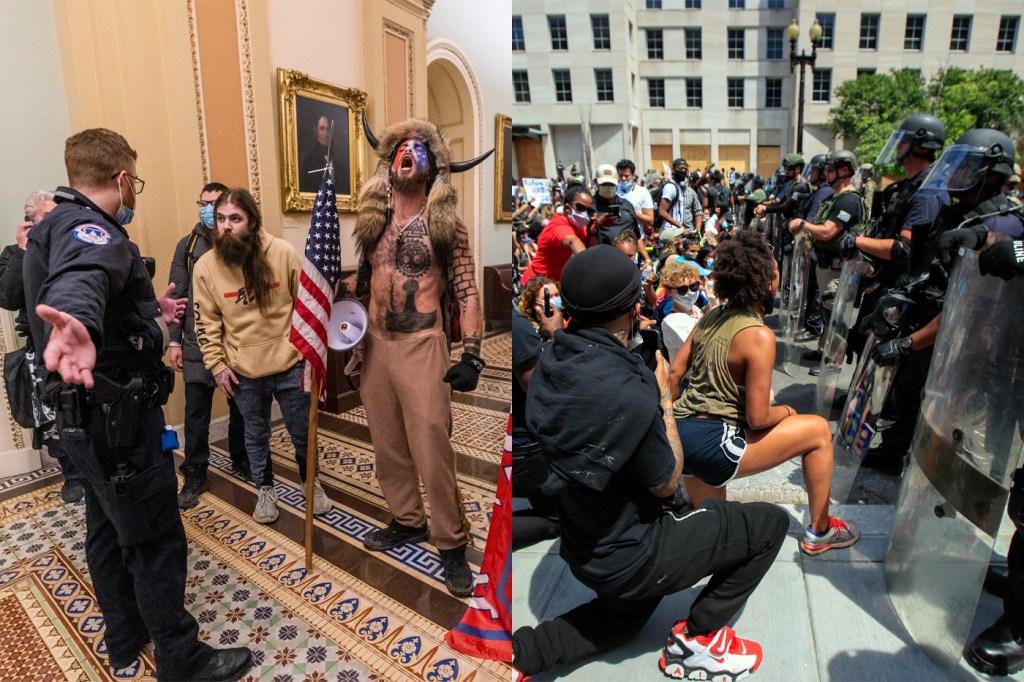Pictures tell the story of police response to the Black Lives Matter protests and Capitol riots

The jarring picture of a Capitol Police officer posing for selfies alongside violent rioters in last week’s deadly Capitol breach sums up in one photo what Northeastern criminal justice professor Rod K. Brunson has studied for decades.
“These images show us exactly who is perceived as dangerous in this country and who isn’t,” said Brunson, who has extensively researched Black men’s experiences with law enforcement in America.

Left to right: Rod Brunson, professor of criminology and criminal justice and political science and Matthew Carroll, journalism professor of the practice. Courtesy photo and my Matthew Modoono/Northeastern University
Images of the angry, violent Trump-backers pouring through Capitol officers’ under-staffed barricades has quickly become another powerful example of disparity for the Black Lives Matter movement, said Brunson, especially when juxtaposed with photos of the police’s heavily-armed show of force during BLM protests last year.
“It all goes back to the history of this country and how that shaped the narrative around who to fear,” said Brunson.
“Given the nature and extent of the violence vividly captured by journalists and bystanders, it makes sense that all Americans might question why those involved in these horrendously criminal acts could leave the U.S. Capitol building without being placed in handcuffs,” he added.
More than 30 people have since been arrested on federal charges in connection to the riots. Still, the images from that day have fueled questions about why there was such a scant law enforcement presence on January 6, even though some Trump supporters had posted violent intentions on social media.
Videos and pictures have played a pivotal role in the Black Lives Matter movement, providing a visceral context to the descriptions of excessive police force and brutality decried by many Black Americans.
The videos depicting the death of George Floyd—a Black man who died after a Minneapolis police officer pressed his knee into Floyd’s neck—in May of 2020 prompted heightened outrage and protest across the nation.
“With the George Floyd video, it created such a stunning impression that you didn’t have to read a word to see what was happening,” said Matthew Carroll journalism professor and former Boston Globe reporter.
“Text is a wonderful medium, but at the end of the day a picture just reaches so many more people,” he said.
That outreach is vital as Black Americans seek to communicate their experience, said Brunson.
“Black people live in a different world and we have to navigate different social situations that white people do not,” said Brunson. According to Brunson’s extensive conversations with young Black men, the disparity is heightened when dealing with the law.
“It’s a combination of being seen as menacing and threatening and living in neighborhoods that are also seen as dangerous,” he said. “The police are on guard about who and what settings are dangerous, and that increases the scrutiny and surveillance that men of color experience.”
While these recent images can further teach Americans about law enforcement interactions with people of color, Brunson said one major lesson remains the same.
“When people say there is unfairness and inequity and injustice, we should believe them and take them at their word,” he said.
For media inquiries, please contact media@northeastern.edu.





